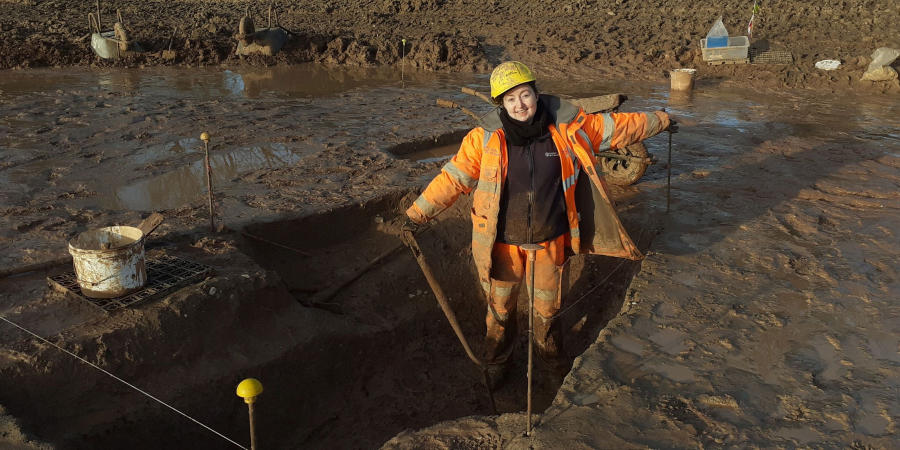A year and a half ago I started my two-month secondment from the Fieldwork team to the Research team, to learn about what happens to fieldwork data post-excavation and to help write reports using that data.
I had temporarily left the mud, elements and chemical toilets behind for a desk in an office with an ambient temperature and proper plumbing. Although I’d left my Fieldwork colleagues on site, I remained connected to the work they were doing through the data they collected and the records they produced. I was reminded how important accurate and comprehensive data is in making sense of a site, and I learnt more about the development of an archaeological project, from the work that takes place before anyone has set foot on site to the production of the final report and, perhaps, publication.
The first clue that there are archaeological remains on a site might be some blotches on a geophysical survey or an enigmatic reference in an old document. Or they may not reveal themselves until they appear as stains or shadows on newly stripped ground. In the field, we excavate and record the features we find, recording their dimensions and positions in photographs, drawings and using a Global Navigation Satellite System (GNSS). We collect samples of the sediments that have filled them in since they fell out of use and gather broken, concreted and corroded fragments of long lost or discarded objects.
The Finds, Environmental, Geomatics and Studio teams analyse the data we’ve collected to produce information about the date, functions and forms of the features. With the expertise of these specialists we can identify phases of occupation and types of activity, create a site narrative and produce plans and pictures, to help reveal the stories of past people, their lives, homes, communities and even deaths. This is why we do what we do; whether in the field, lab or office, we remember those who came before us, try to understand them and, perhaps, to make some sense of the world we have inherited from them. Of course, not all sites are archaeologically productive, and even those that are require a lot of routine work such as collating, quantifying and sorting, not simply to make sense of the data but to ensure it can be utilized by those who come to it after us.
Workloads and a pandemic contrived to extend the initial two-month duration of my secondment, but I never got bored and continued to learn a lot (although archaeology is like that anyway, whatever job you’re doing). Having got used to the rhythms of office life, I later had to adapt to working from home. Heading back to field I will have readjust to working outdoors, engage muscles that have been mostly out of action for a while (those you use when wielding a mattock or a trowel are quite different to the ones you use when operating a keyboard), and get up to speed with updated digital recording equipment and new ways of working on site following social distancing measures.
So, I’m signing off, for now. I shall return to the field to see what I can find, with a new appreciation of the value of the data collected in the field and the skill of the people who try to make sense of it once the Fieldwork team has moved on to the next site.
By Emma Metcalfe, Fieldwork Archaeologist
